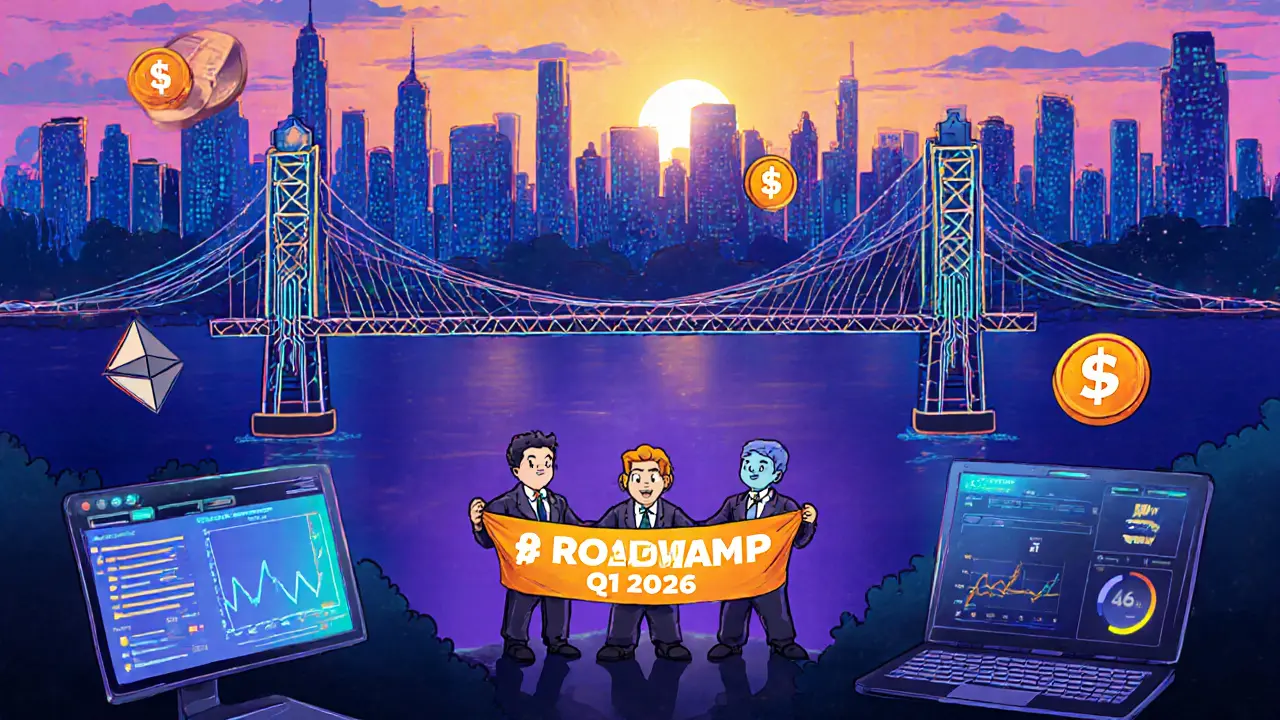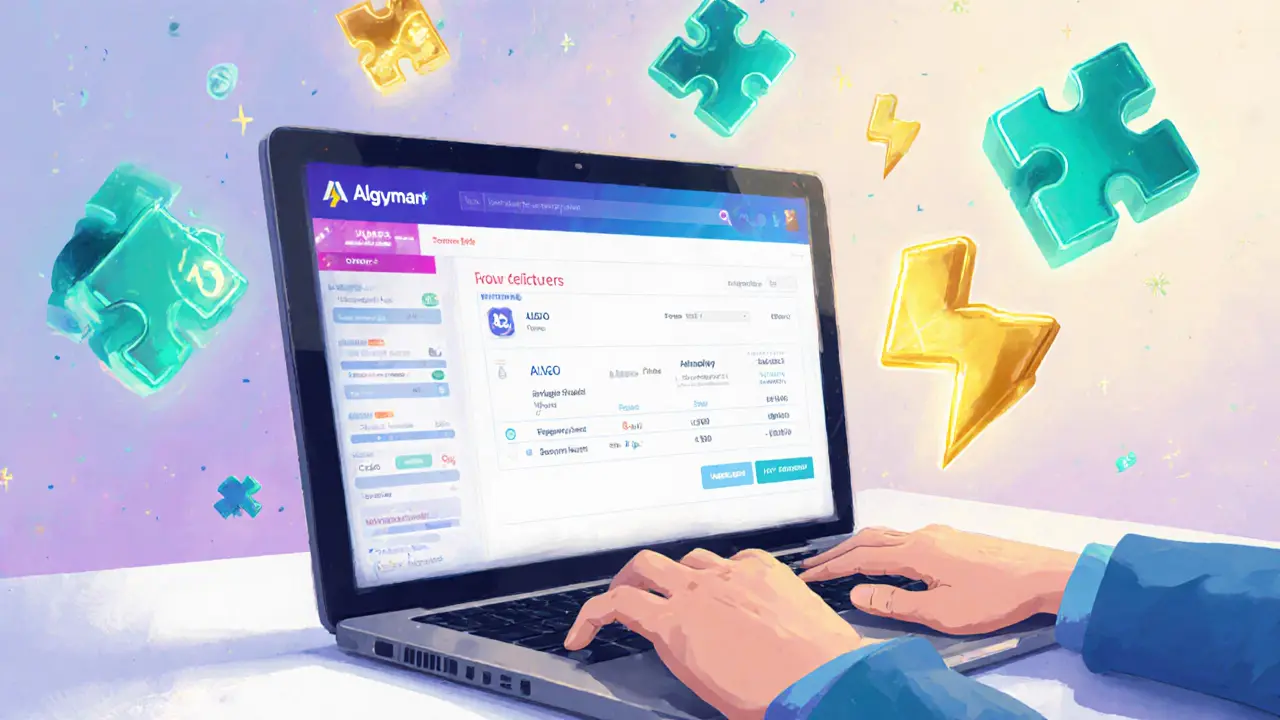Tinyman DEX Fee Calculator
Estimated Monthly Trading Costs
Total Trades per Month:
Average Trade Size:
Total Monthly Fee:
Fee Percentage:
Tinyman v1 vs v2 Feature Comparison
| Feature | v1 (2022) | v2 (2024-Present) |
|---|---|---|
| Smart-contract architecture | Single-contract pool | Modular, upgradable contracts |
| Liquidity pool creation | Permissioned (admin-approved) | Permissionless, anyone can launch |
| Limit orders | Not available | Fully supported |
| DCA (recurring swaps) | Manual only | Automated DCA enabled |
| Fee structure | 0.3% swap fee + 0.05% admin fee | 0.3% swap fee (no admin fee), $TINY discounts |
| Cross-chain functionality | None | Roadmap includes bridges to Ethereum & Solana |
When you hear the term Tinyman a decentralized exchange and automated market maker built on the Algorand blockchain, you might wonder whether it lives up to the hype around low‑fee, fast DeFi trading. This review breaks down the platform’s core tech, trading experience, fees, and roadmap so you can decide if it’s worth a spot in your crypto toolbox.
Quick Take
- Built on Algorand, Tinyman offers sub‑second finality and near‑zero fees.
- Version2 (v2) adds permission‑less pools, limit orders, and DCA.
- Supports 35 coins and 86 trading pairs, mainly Algorand Standard Assets.
- Average bid‑ask spread sits around 0.65%, with no traditional market‑maker fees.
- Future plans include cross‑chain swaps and expanded $TINY token utilities.
What is Tinyman and Why Does Algorand Matter?
Launched in 2021 by Kaan Eryilmaz, Tinyman positions itself as the go‑to DEX for the Algorand ecosystem. Algorand a proof‑of‑stake blockchain known for fast block finality (≈4.5seconds) and low transaction costs provides the underlying speed and security that Ethereum‑based AMMs often lack.
The platform functions as an Automated Market Maker a smart‑contract‑driven liquidity pool that determines prices algorithmically. Instead of matching buyers and sellers order‑by‑order, traders swap against a pool of assets, earning fees for liquidity providers (LPs) in the process.
Key Features and DeFi Toolset
Beyond basic swaps, Tinyman ships a suite of DeFi utilities that appeal to both casual traders and power users:
- Limit Orders: Set a price target and let the AMM execute when conditions are met.
- Dollar‑Cost Averaging (DCA): Automate recurring purchases to smooth out volatility.
- Liquid Staking - Tinyman’s liquid staking lets users stake ALGO and receive a tokenized representation that continues to earn rewards while staying tradable.
- Permissionless Farms (Farming V2): Users can earn extra yields by providing liquidity to specific pools without needing a whitelist.
- $TINY Token: The native governance token powers treasury voting, fee discounts, and future cross‑chain incentives.
All these tools work with Algorand Standard Assets (ASAs) tokens issued on Algorand that conform to a standardized format, ensuring compatibility across the ecosystem.

Performance Metrics: Fees, Volume, and Asset Coverage
As of the latest data (Oct2025), Tinyman lists 35 coins and offers 86 trading pairs. The 24‑hour trading volume fluctuates daily, placing the exchange in the 72nd percentile for volume among DEXs and the 65th percentile for combined order‑book metrics.
The platform’s fee model is simple: a flat 0.3% fee on swaps, which is automatically distributed to LPs. Unlike many Ethereum AMMs, there’s no extra gas‑price surcharge because Algorand’s base transaction fee is a fraction of a cent. The reported average bid‑ask spread hovers around 0.649%-competitive for a niche DEX.
For reference, here’s a quick comparison between Tinyman’s first and second versions:
| Feature | v1 (2022) | v2 (2024‑Present) |
|---|---|---|
| Smart‑contract architecture | Single‑contract pool | Modular, upgradable contracts |
| Liquidity pool creation | Permissioned (admin‑approved) | Permissionless, anyone can launch |
| Limit orders | Not available | Fully supported |
| DCA (recurring swaps) | Manual only | Automated DCA enabled |
| Fee structure | 0.3% swap fee + 0.05% admin fee | 0.3% swap fee (no admin fee), $TINY discounts |
| Cross‑chain functionality | None | Roadmap includes bridges to Ethereum & Solana |
How to Trade and Provide Liquidity on Tinyman
Getting started is straightforward. First, create an Algorand wallet (e.g., MyAlgo, Defly, or Algorand’s official app) and fund it with ALGO for transaction fees. Then connect the wallet to the Tinyman web UI.
- Choose a trading pair from the dropdown (e.g., ALGO/USDC).
- Enter the amount you want to swap and review the projected price impact.
- Confirm the transaction; the swap settles in under five seconds.
To become a liquidity provider, click “Add Liquidity,” select the pool, and deposit equal-value amounts of the two assets. You’ll receive pool tokens representing your share. These tokens accrue a portion of the 0.3% swap fees proportional to your contribution.
If you hold $TINY, you can stake it for additional yield or use it to claim reduced fee tiers-another incentive to stay engaged with the platform’s governance.
Pros, Cons, and Who Should Use Tinyman
- Pros
- Blazing‑fast settlement thanks to Algorand’s sub‑second finality.
- Near‑zero transaction fees keep small trades viable.
- Rich feature set (limit orders, DCA, liquid staking) usually found on larger DEXes.
- Permissionless pool creation encourages community innovation.
- Cons
- Asset selection is limited to Algorand’s ecosystem; no native Ethereum tokens.
- Liquidity depth can be shallow for less‑traded pairs, leading to higher slippage.
- Cross‑chain bridge is still roadmap‑bound, so multi‑chain traders must use other platforms.
- Best For
- Algorand enthusiasts who want ultra‑low fees.
- Liquidity providers looking for permissionless pool opportunities.
- Traders who value built‑in limit orders and DCA without extra contracts.
Future Outlook: Cross‑Chain Ambitions and $TINY Evolution
The roadmap highlights three major thrusts:
- Cross‑chain swaps: Planned bridges will let users swap assets from Ethereum, Solana, and other networks directly on Tinyman, expanding market reach.
- Enhanced $TINY utility: Upcoming governance proposals aim to allocate $TINY rewards to active LPs and enable fee rebates for high‑volume traders.
- Analytics upgrades: Real‑time TVL dashboards and on‑chain metric visualizers are slated for Q12026.
Coupled with the Algorand Foundation’s $300million DeFi fund, Tinyman has a solid backing to pursue these goals. If the team delivers on cross‑chain functionality, the platform could graduate from a niche Algorand DEX to a genuine multi‑chain player.

Frequently Asked Questions
Is Tinyman safe to use?
Yes. Tinyman runs on Algorand’s audited proof‑of‑stake ledger, and its smart contracts are open‑source. The platform has undergone multiple security audits since launch, and no major exploits have been reported to date.
How do I claim $TINY rewards?
Staked $TINY can be claimed directly from the “Governance” tab on the Tinyman UI. Rewards are distributed weekly and can be re‑staked for compounding effect.
Can I trade non‑Algorand tokens on Tinyman?
Currently only Algorand Standard Assets are supported. Cross‑chain bridges are planned, but they are not live yet.
What’s the difference between Tinyman v1 and v2?
Version2 introduces modular contracts, permissionless pool creation, limit orders, DCA, and fee discounts for $TINY holders-all aimed at a smoother, more flexible trading experience.
How do I provide liquidity and earn fees?
Add equal‑value amounts of both assets to a pool, receive pool tokens, and sit back. Every swap that touches your pool splits the 0.3% fee proportionally among all LPs.


Millsaps Delaine
One must first appreciate the audacious ambition that Tinyman exhibits in positioning itself as the preeminent DEX on Algorand, a platform which, despite its relative obscurity, offers a tantalizing canvas for decentralized finance experimentation. The migration from v1 to v2, while touted as a mere upgrade, in reality signifies a paradigmatic shift in architectural philosophy, abandoning the monolithic contract in favor of a modular, upgradable framework that whispers of future‑proofing. Such a transition, however, is not without its sacrificial lambs; the removal of the admin fee, while ostensibly benevolent, subtly rebalances the incentive structure, casting a lingering shadow over long‑term sustainability. Moreover, the introduction of $TINY discounts, though superficially generous, carries the implicit expectation of token hoarding, thereby engendering a quasi‑centralized dynamic antithetical to the very ethos of decentralization. The fee apparatus, anchored at a flat 0.3% swap levy, belies a deeper complexity when one factors in slippage, liquidity depth, and the oft‑overlooked impact of cross‑chain bridge latency. In juxtaposing Tinyman's offering with its contemporaries, one cannot ignore the conspicuous absence of a robust cross‑chain bridge, a lacuna that the roadmap vows to fill but which presently hinders interoperability. The DCA automation, a feature long coveted by the retail legion, finally materializes in v2, yet its efficacy remains tethered to the volatile pulse of the underlying market. Limit orders, now fully supported, are a welcome augmentation, yet their practical utility is contingent upon a mature order‑book ecosystem, which Tinyman has yet to nurture. The user interface, polished and sleek, masks an underlying labyrinth of parameters that the uninitiated may find daunting, thereby reinforcing a barrier to entry that the platform seemingly tolerates. Nevertheless, the community's palpable enthusiasm, as evidenced by the burgeoning $TINY governance proposals, suggests a collective desire to steer the vessel toward uncharted waters. One must also acknowledge the strategic partnership with Algorand Foundation, a symbiotic relationship that, while beneficial, introduces an element of centralized influence over protocol governance. In the grand tapestry of decentralized exchanges, Tinyman occupies a niche that is both promising and precarious, teetering between innovation and overextension. A prudent investor, therefore, ought to calibrate expectations, weighing the avant‑garde features against the nascent state of liquidity and adoption. As the 2025 horizon approaches, the litmus test for Tinyman will be its ability to sustain organic growth without resorting to artificial incentives. Ultimately, the onus falls upon the discerning participant to dissect these nuances, lest one be swept away by the siren call of superficial metrics.